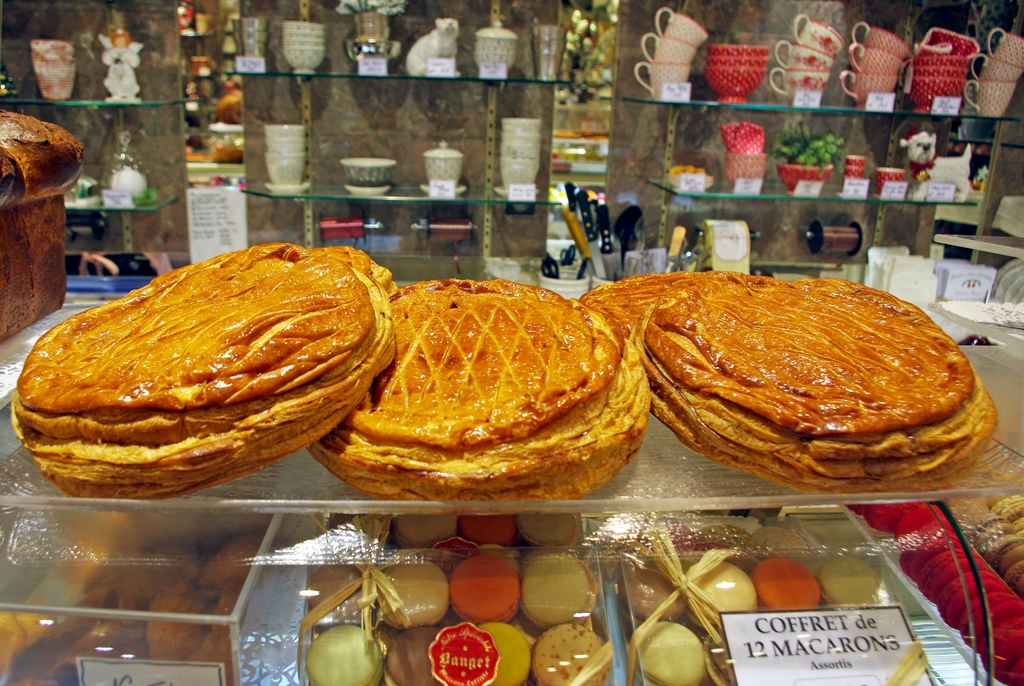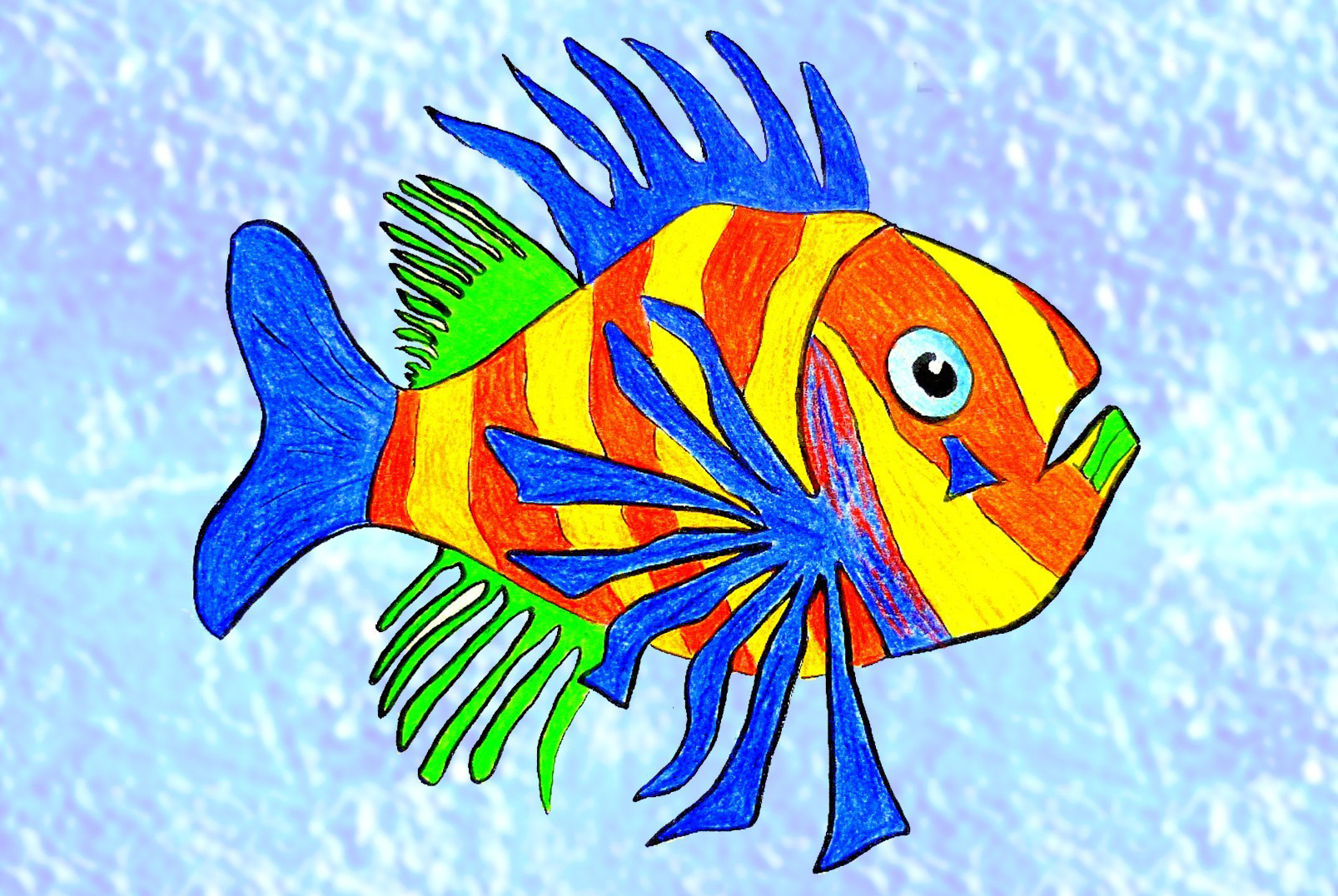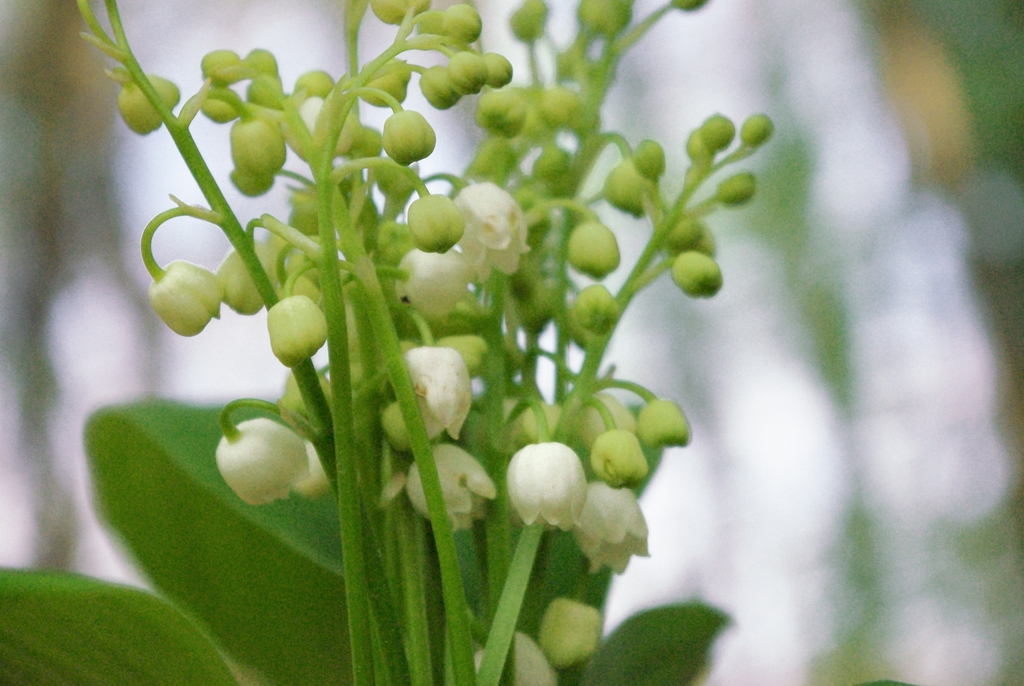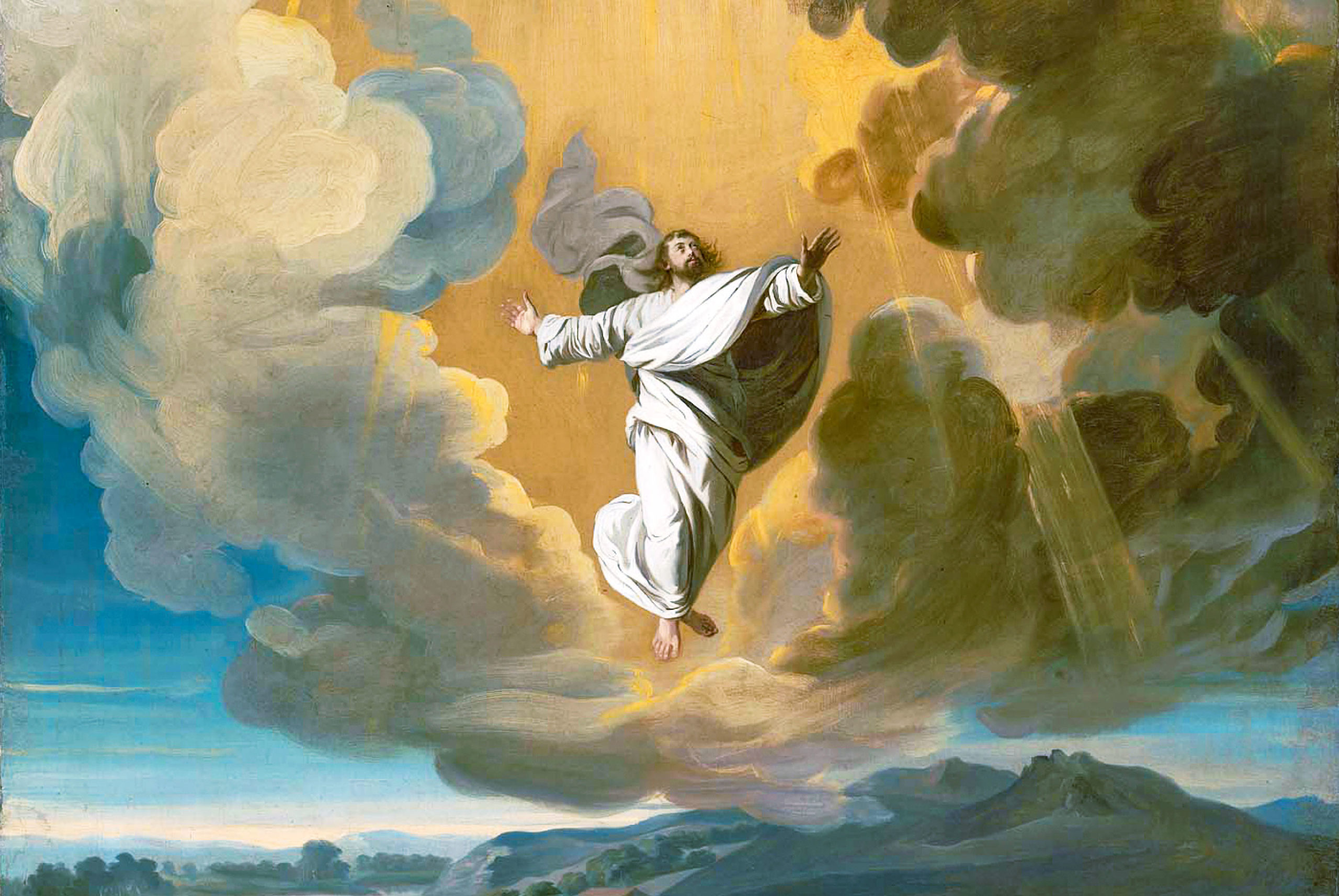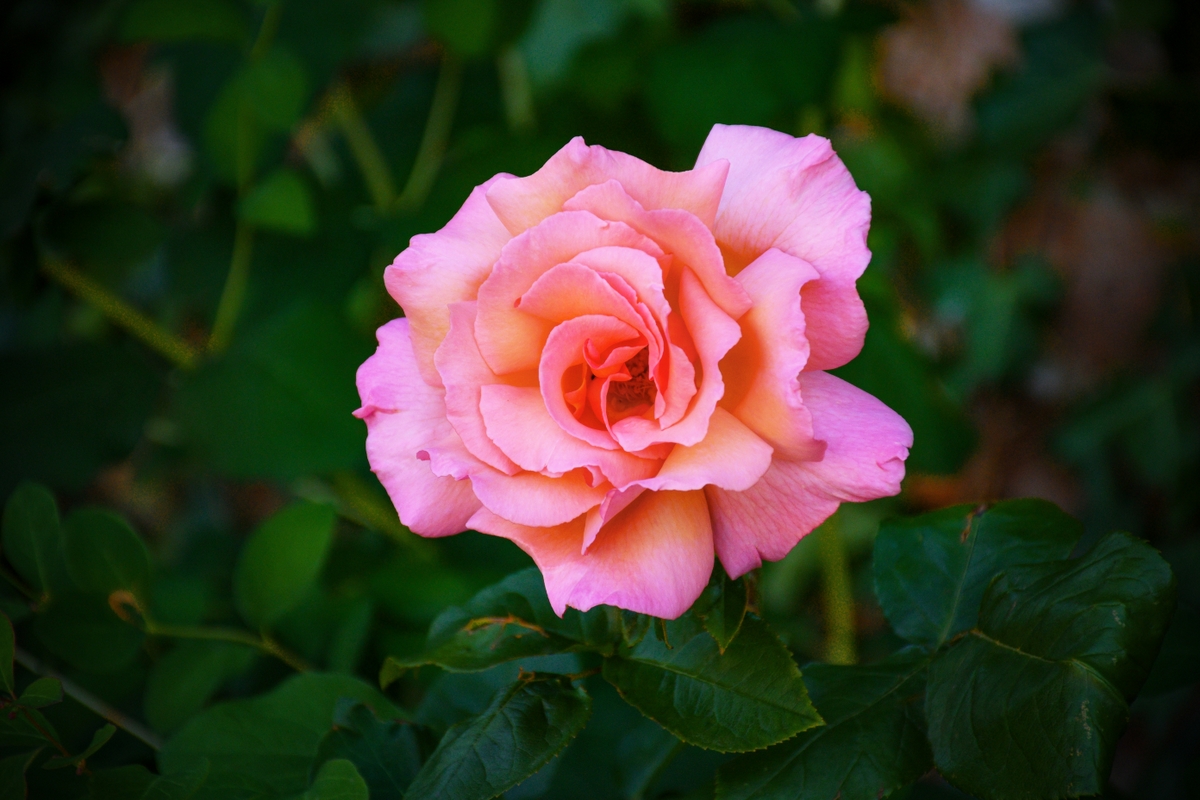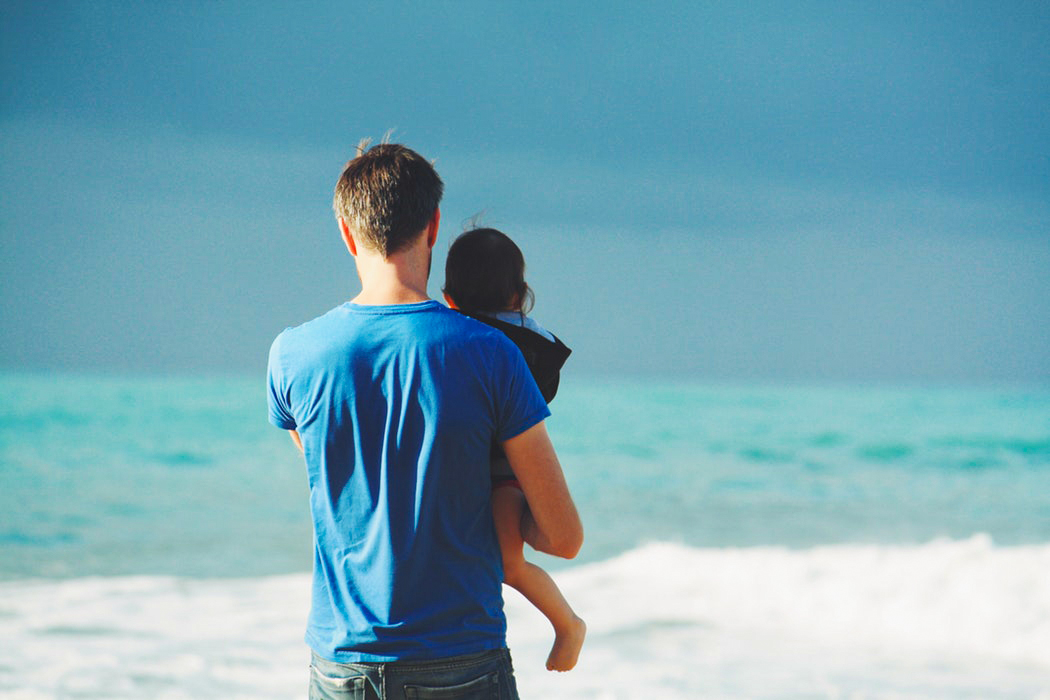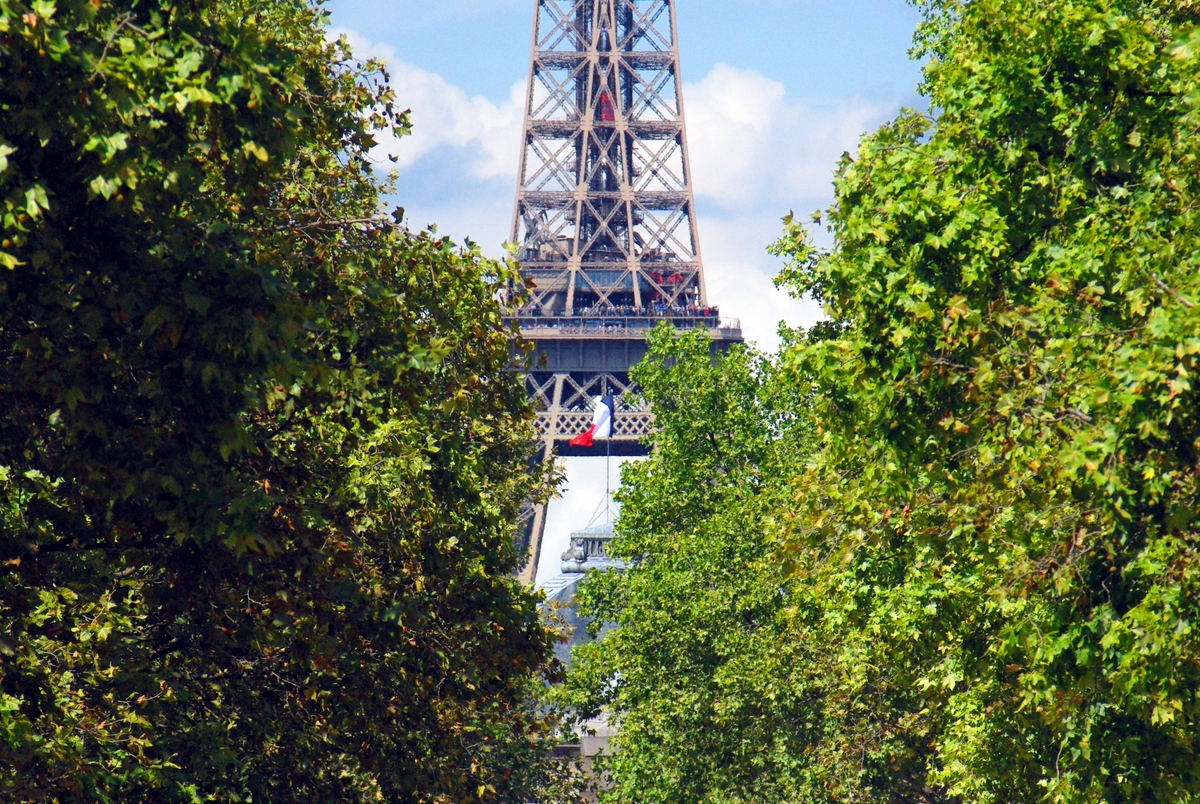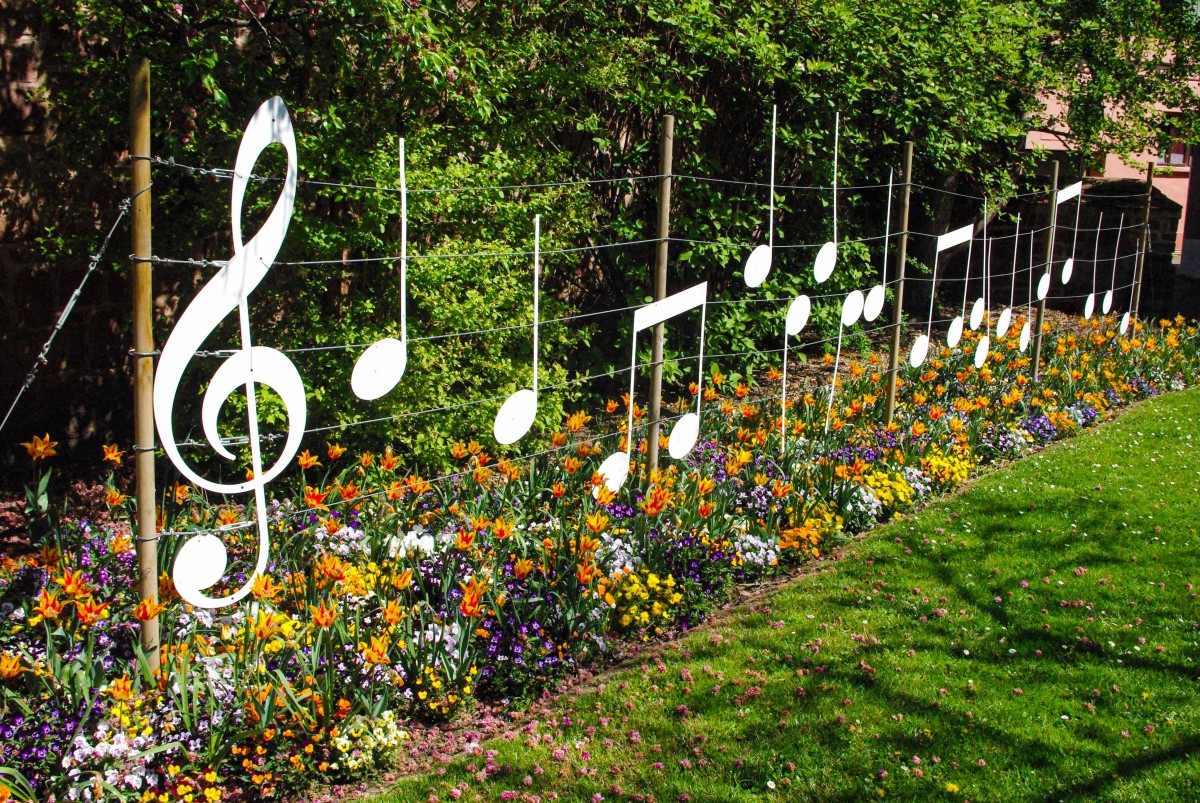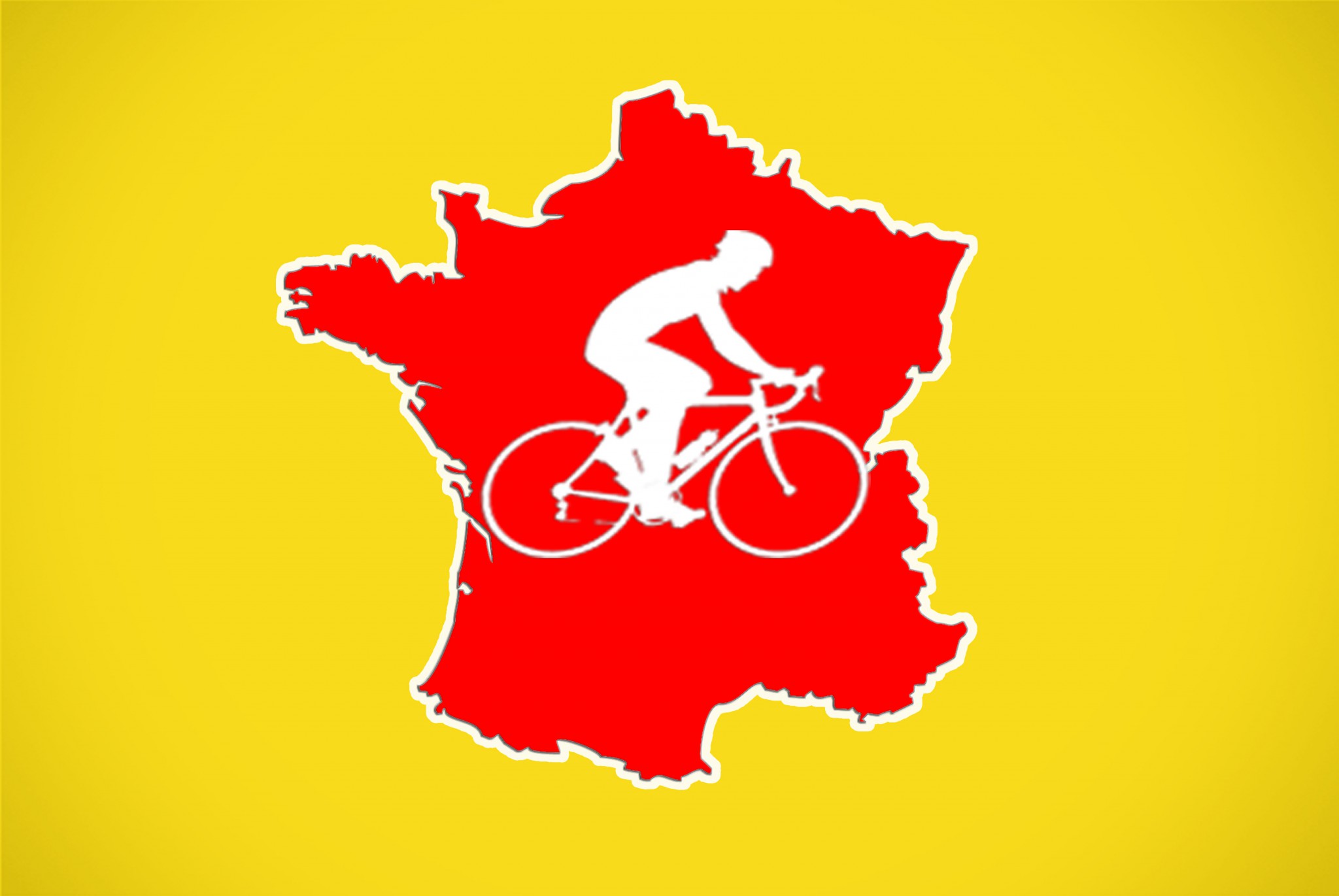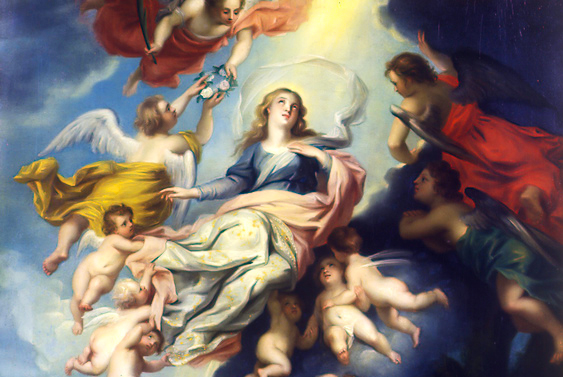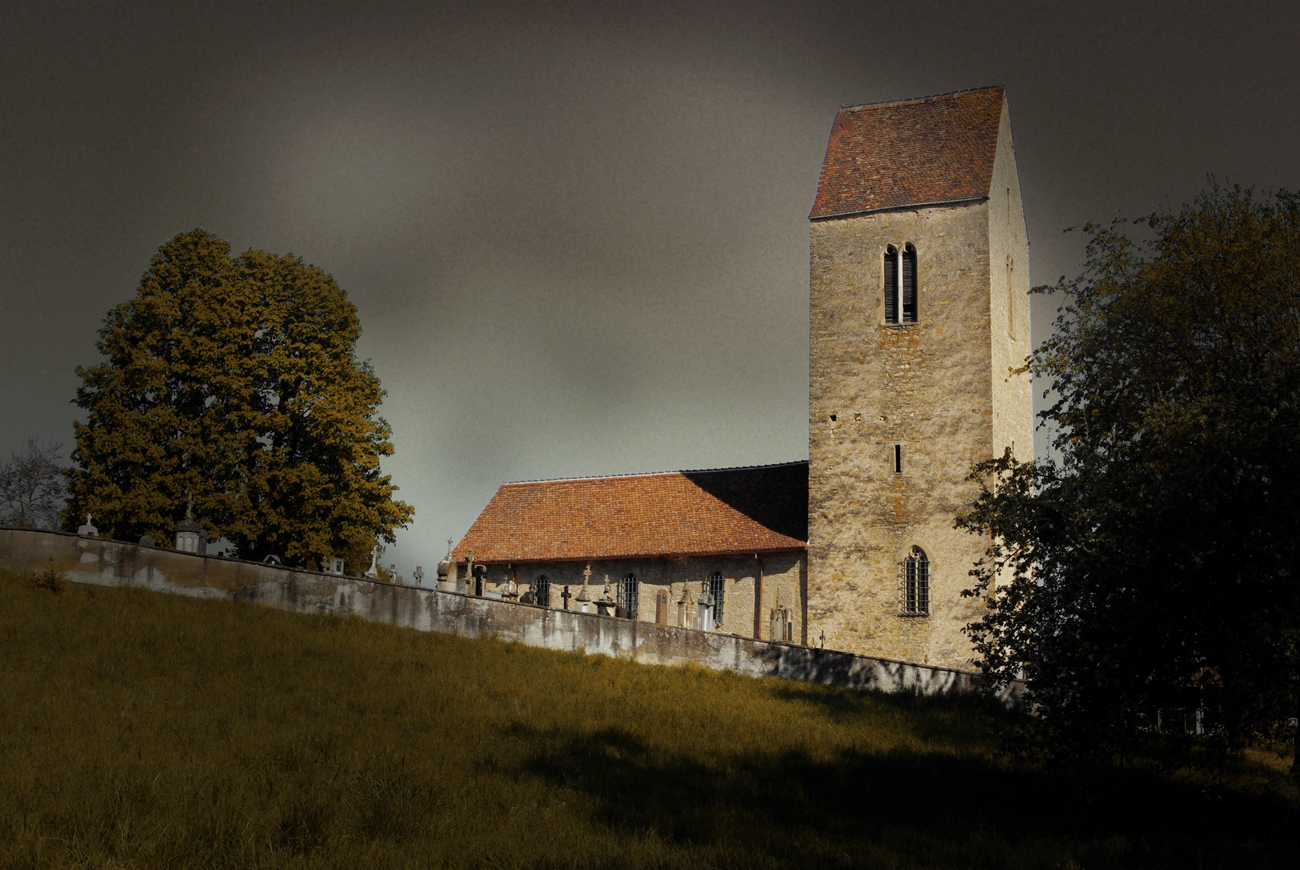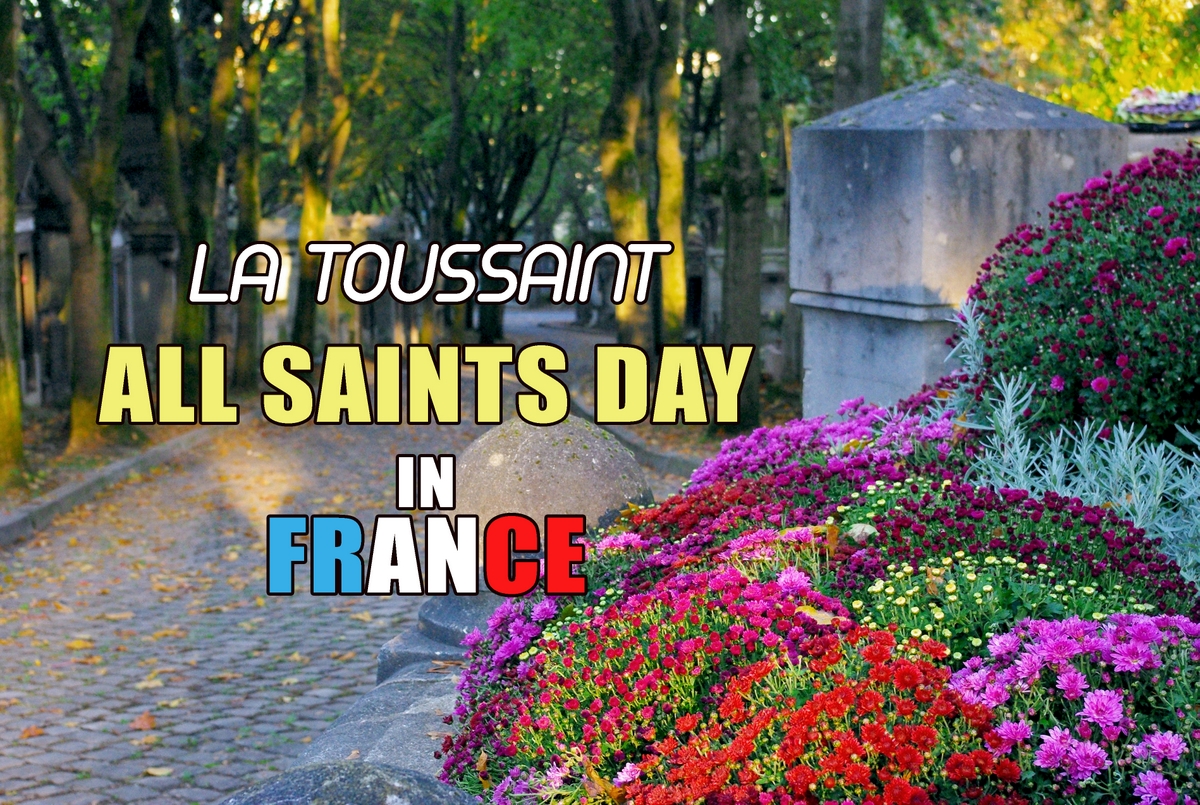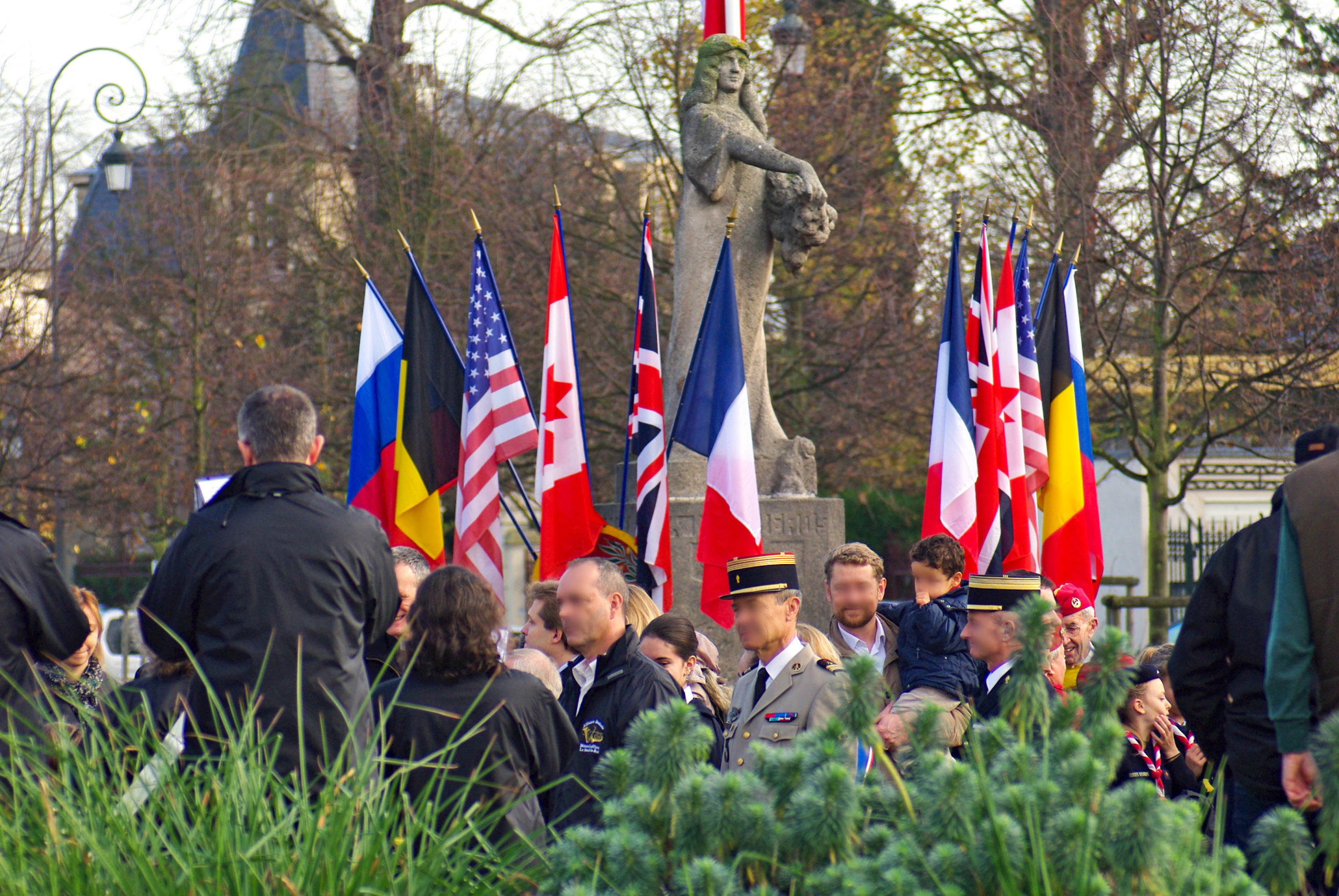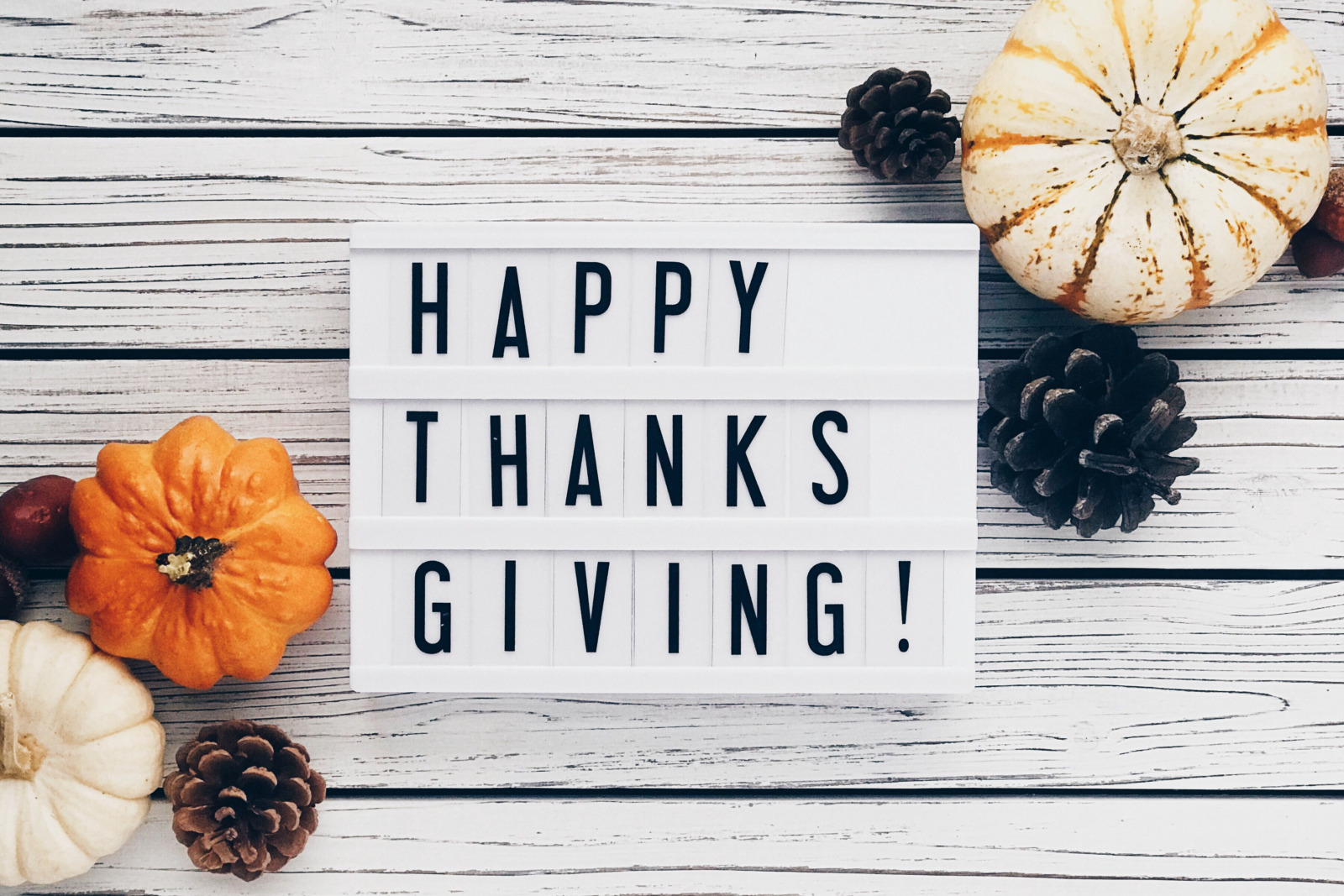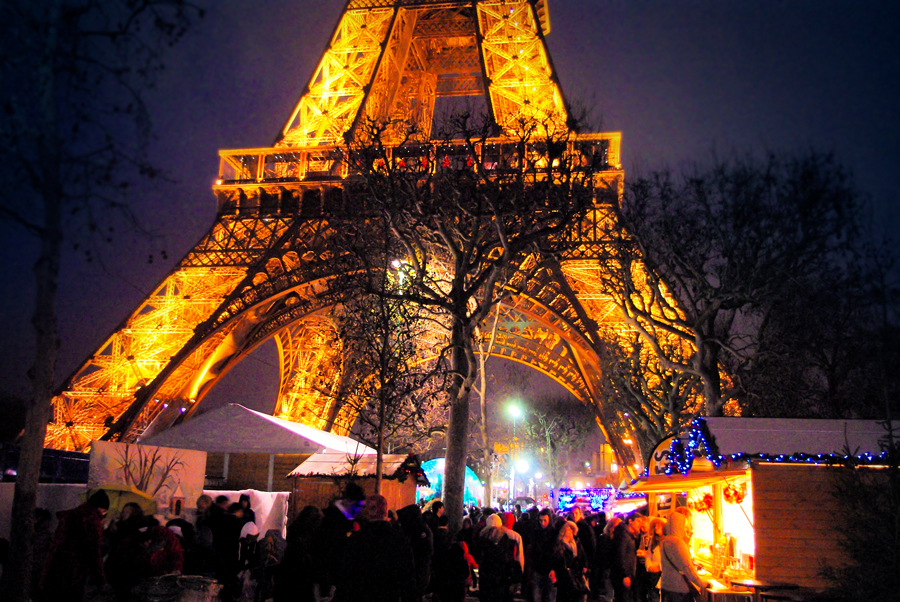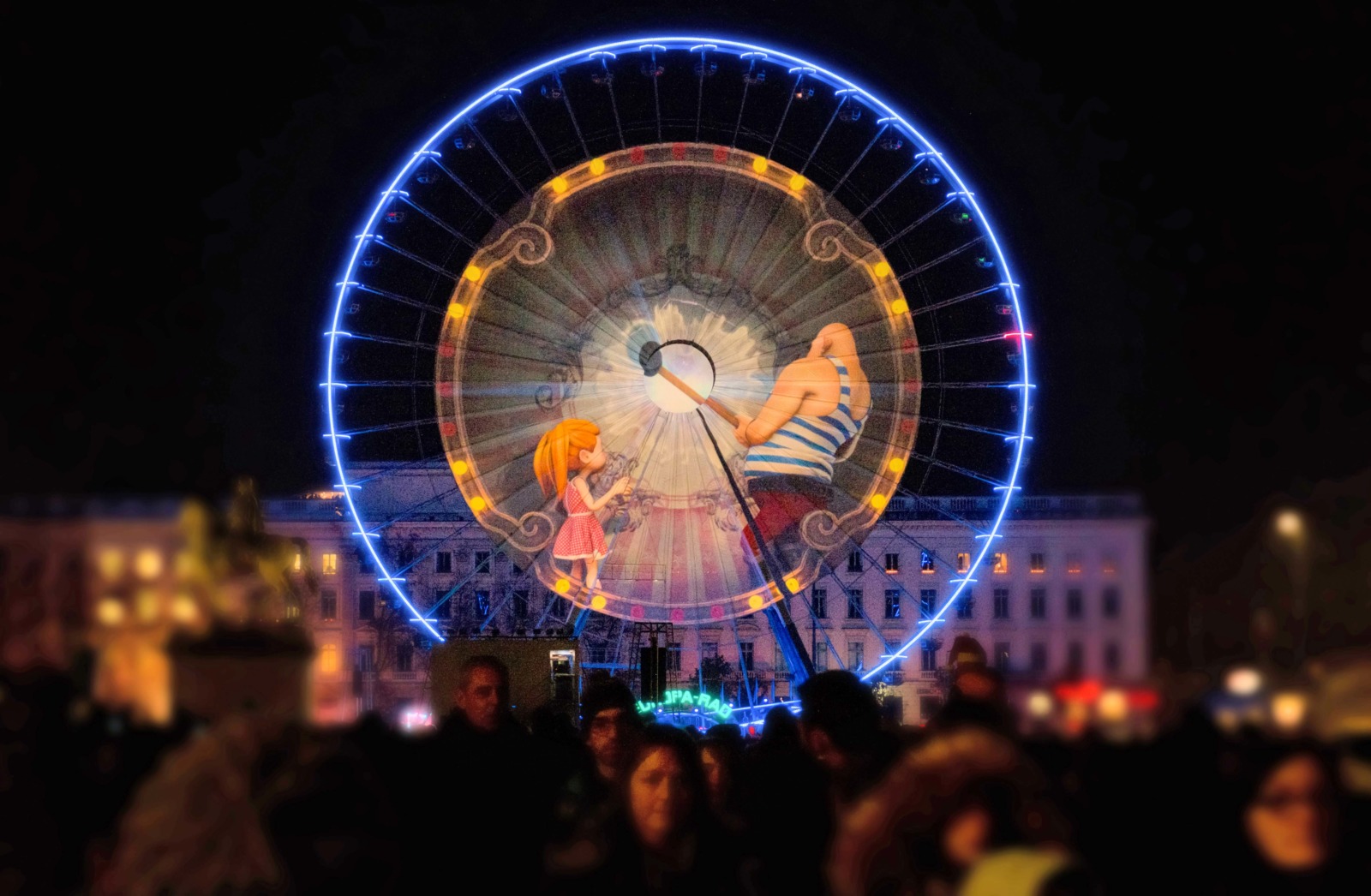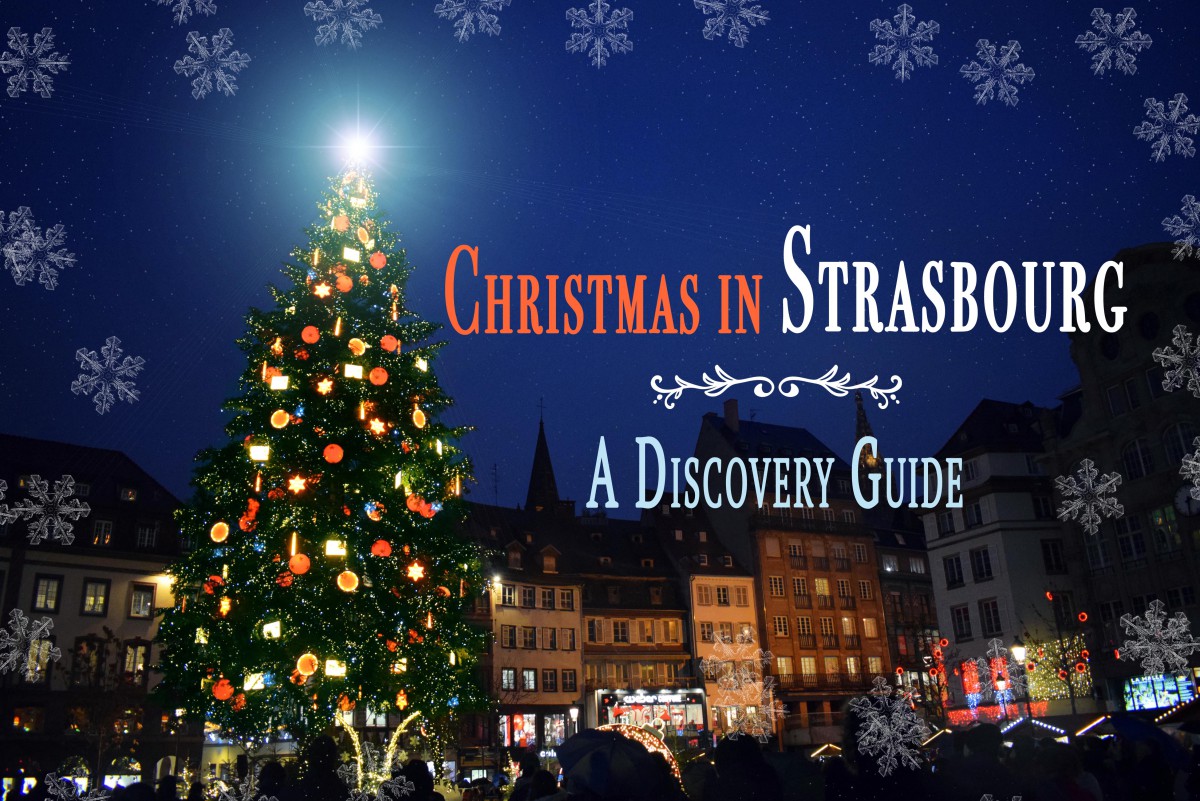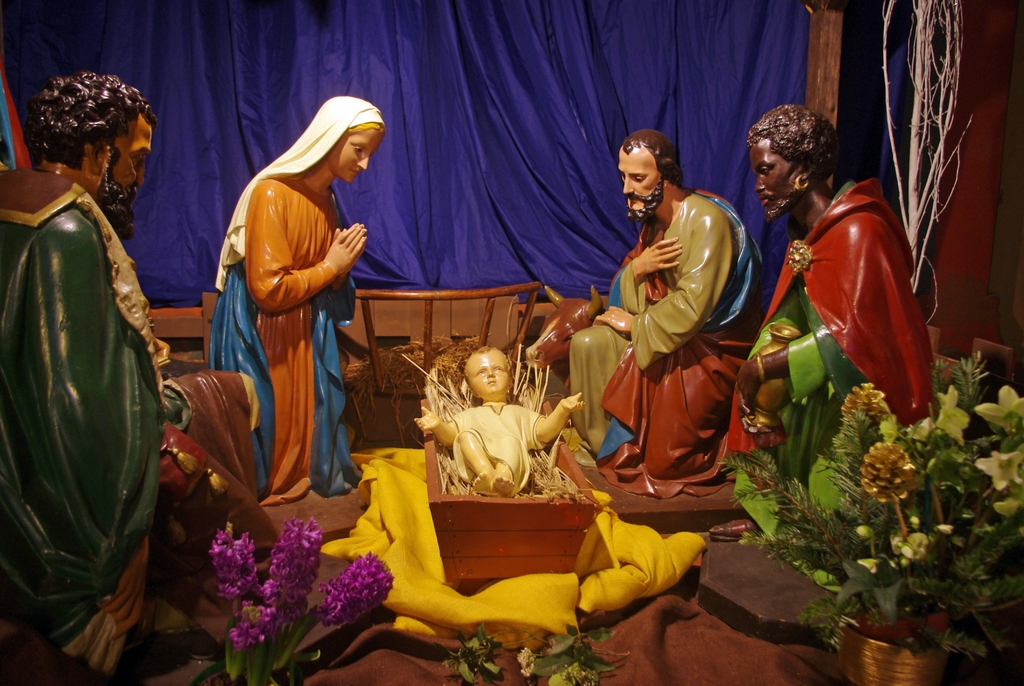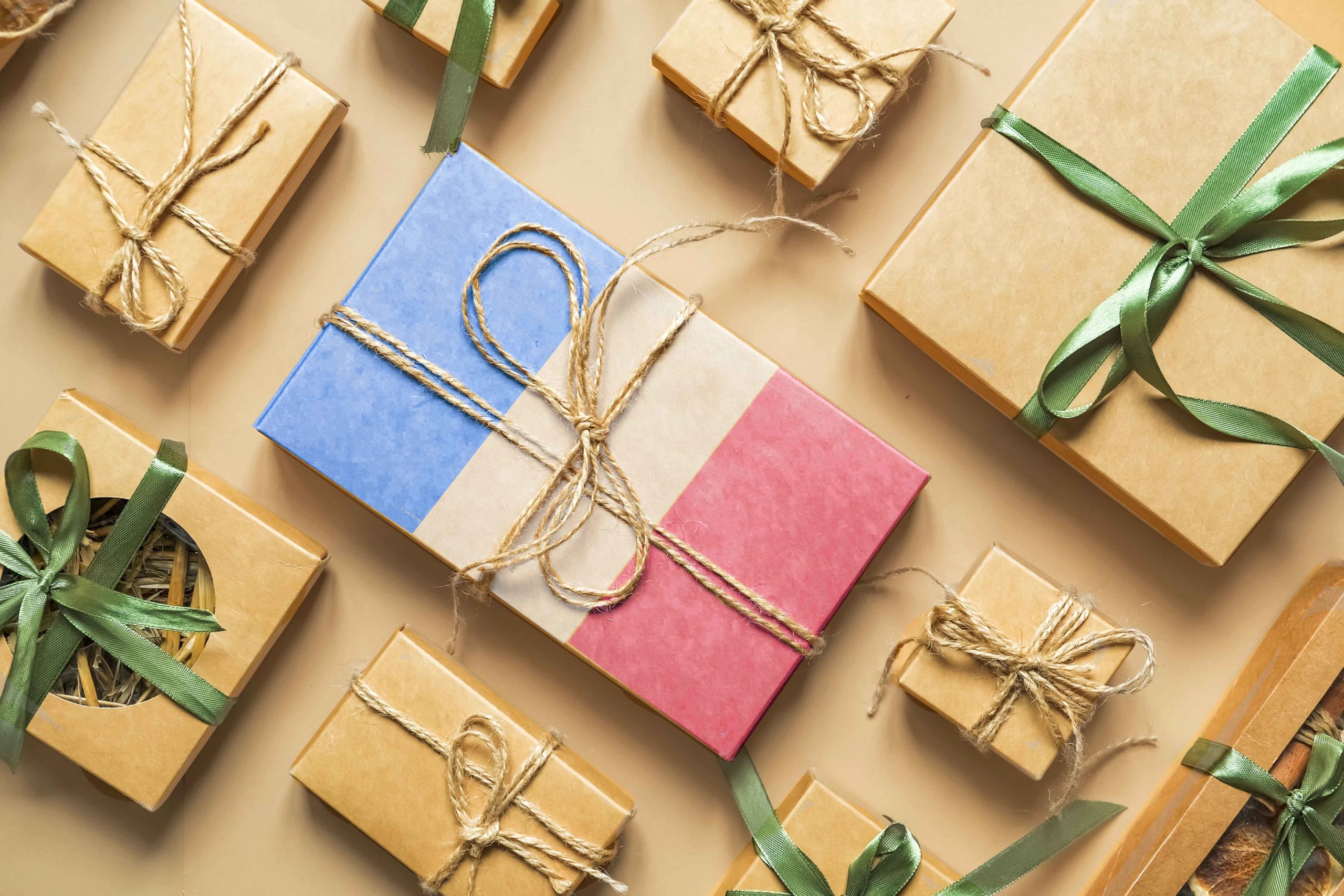Saint Patrick’s Day marks the feast day of the Irish national hero, St Patrick, also the patron saint of Ireland. In France, concerts of Celtic music highlight la fête de la Saint-Patrick. Saint Paddy’s Day is also the occasion for entertainment in the pubs of major French cities, where the beer flows abundantly. Let’s discover the origins and traditions linked to this festival, which is becoming increasingly popular with the French year after year.
🎦 Watch a short presentation on Saint Patrick’s Day in France ⤵
Who was Saint Patrick?
Saint Patrick was born around 390 into a Roman family in Britain and received a Christian education.
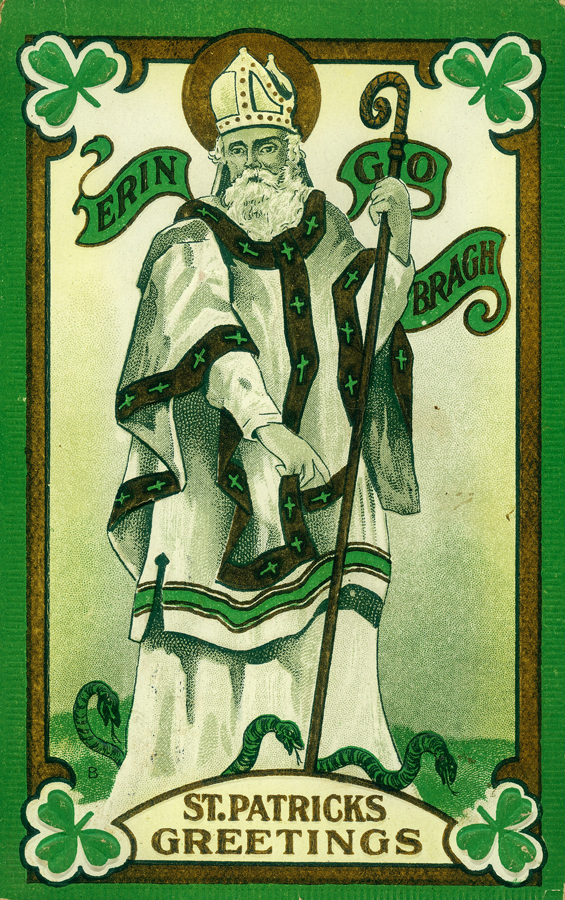
At sixteen, he was captured by Scots or Pictish pirates and sold into slavery in Ireland, where he became a pig keeper.
He was not very religious before his capture, it was during this challenging time that he met God and became a devout Christian.
Patrick escaped six years later, after a 300-kilometre walk, took a ship and landed in Gaul, where he was ordained a priest.
He disembarked in Armorica (now Brittany, France) and is said to have crossed Gaul before reaching “islands of the sea” without specifying the exact place.
Saint Patrick on the French Riviera!
A late tradition has him living in the monastery of Saint-Honorat, in the Lérins islands off Cannes. There he would have devoted himself to theological studies for two years.
![The Lérins monastery off Cannes © Alberto Fernandez Fernandez - licence [CC BY 2.5] from Wikimedia Commons](https://frenchmoments.eu/wp-content/uploads/2023/01/Monastere-de-Lérins-©-Alberto-Fernandez-Fernandez-licence-CC-BY-2.5-from-Wikimedia-Commons-scaled.jpg)
Another tradition, just as uncertain, has him going to Auxerre, Burgundy, with Saint Germain, where he became a deacon and then a bishop.
![Auxerre Cathedral © Pline - licence [CC BY-SA 3.0] from Wikimedia Commons](https://frenchmoments.eu/wp-content/uploads/2023/01/Auxerre-Cathedral-©-Pline-licence-CC-BY-SA-3.0-from-Wikimedia-Commons-scaled.jpg)
At the request of Pope Celestine, Patrick returned to Ireland in 432 as a missionary bishop. After landing at Saul, near Downpatrick, he worked on evangelising the island and established the monastic life there.
Saint Patrick’s shamrock
Saint Patrick is said to have explained the concept of the Holy Trinity to the Irish in a sermon at the Rock of Cashel using a shamrock, thus making it the symbol of Ireland (the official emblem of the country being the Celtic harp).
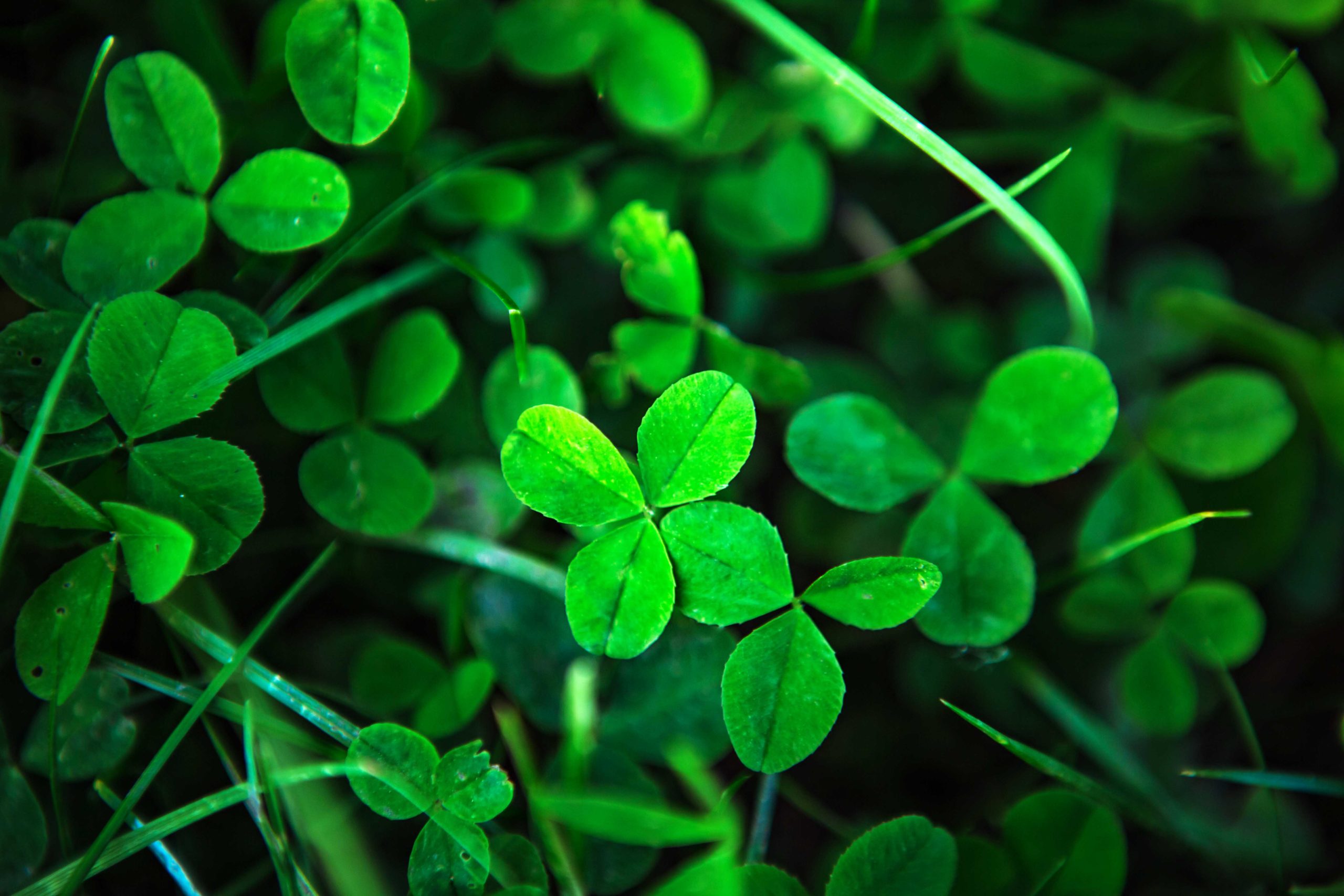
Legend has it that Patrick depicted the Holy Trinity Chapel on Saint Honoré’s Island off Cannes to represent the Trinity. This chapel had an architectural shape similar to a cloverleaf (a nave and three circular chapels).
Every year, Irish people put a shamrock on their buttonholes to remember this religious teaching.
What is the difference between a clover and a shamrock?
While in French, there is only one word for the species of the Trifolium family (le trèfle), there are two in English: clover and shamrock.
To begin with, let’s state the obvious:
Paris is France.
But France is not only Paris.
So it is with clovers and shamrocks.
One is a broader generic term (like France: clover), and the other is more specific (like Paris: shamrock).
All shamrocks are clovers, but not all clovers are shamrocks!
What is a clover?
The term “clover” can refer to any 300 or so species in the Trifolium family. The term ‘trefoil’ also describes this family of plants and gives us a clue about its literal meaning. Just look at the prefix and root:
- tri- or tre- meaning ‘three’ (in French, trois)
- the root -foil or -folium meaning leaf (in French, feuille).
Thus, clovers are plants with a three-leaf structure.
Furthermore, the most common clover species are:
- Alsatian clover,
- black clover,
- red clover,
- strawberry clover,
- Swedish clover, and
- white clover.
What is a shamrock?
A “shamrock”, however, is more specific. The term derives from the Gaelic word seamróg, which means “little clover”.
Most botanists concur that a shamrock most likely refers to white clover (trifolium repens) or suckling clover (trifolium dubium).
Above all, the shamrock is a symbol of Ireland and Saint Patrick’s Day. Notably, this symbol specifically has three leaves, not four. As mentioned above, Saint Patrick used this specific feature to illustrate the principles of the Holy Trinity – three leaves joined by a single stem.
What about four-leaf clovers?
So, if a ‘normal’ clover has only three leaves, what about four-leaf clovers?
Well, a four-leaf clover is nothing more or less than a mutated clover. If you have been crawling around looking for a four-leaf clover in the grass, you know that this mutation is rare!
Hence, the druids (priests of the ancient Celts) claimed that a four-leaf clover was a good luck charm against evil spirits.
Nowadays, the “evil spirits” part of the story has been long forgotten and finding the rare plant is a sign of good luck.
Just as Saint Patrick used the three leaves of the shamrock to explain the Holy Trinity, the four leaves of a four-leaf clover can represent:
- faith,
- hope,
- love,
- and luck.
The shamrock: symbol of Ireland… and of spring!
Using a plant to herald spring at this time of year is not surprising. Indeed, the origin of the custom of hanging a sprig of boxwood or laurel in houses on Palm Sunday is based on the same hope of fertility and fecundity promised by the rebirth of nature. This theme is also reminiscent of the sprig of lily of the valley on May Day in France.
No snakes in Ireland!
Legend has it that it was at this point that he drove all the snakes out of the country, an action that symbolised the conversion of the Irish people: the snakes represented the Celtic polytheistic beliefs of the Irish, who were likened to Satan, who was blamed for the ignorance of the true God.
Last days and cult of the saint
Contrary to his current popularity, Patrick met with severe enmity during his lifetime.
After many years of evangelism, he retired to the Priory of Down in Ulster, where he died in 461. Ireland had become the “island of saints”, thanks to him.
Tradition attributed the introduction of the cult of Saint Patrick in Northern Gaul to the missionary Fursy de Péronne in the 7th century.
For Catholics, Saint Patrick is the patron saint of Ireland, engineers and snake handlers.
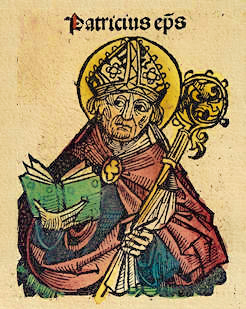
The origins of Saint Patrick’s Day
Saint Patrick’s Day was already celebrated by the Irish in the 9th and 10th centuries. The observation of the festival over time by the Irish has associated Saint Patrick’s Day with Ireland, especially in the system of religious patronage. Much like the storming of the Bastille is associated with France and Independence Day with the USA.
17 March was recognised as a legal holiday in the Irish calendar on 16 March 1607. Contrary to popular belief, not least because of a simplification by foreigners and the media, Saint Patrick’s Day is not the Irish National Day.
In 1903, St Patrick’s Day became an official public holiday in Ireland.
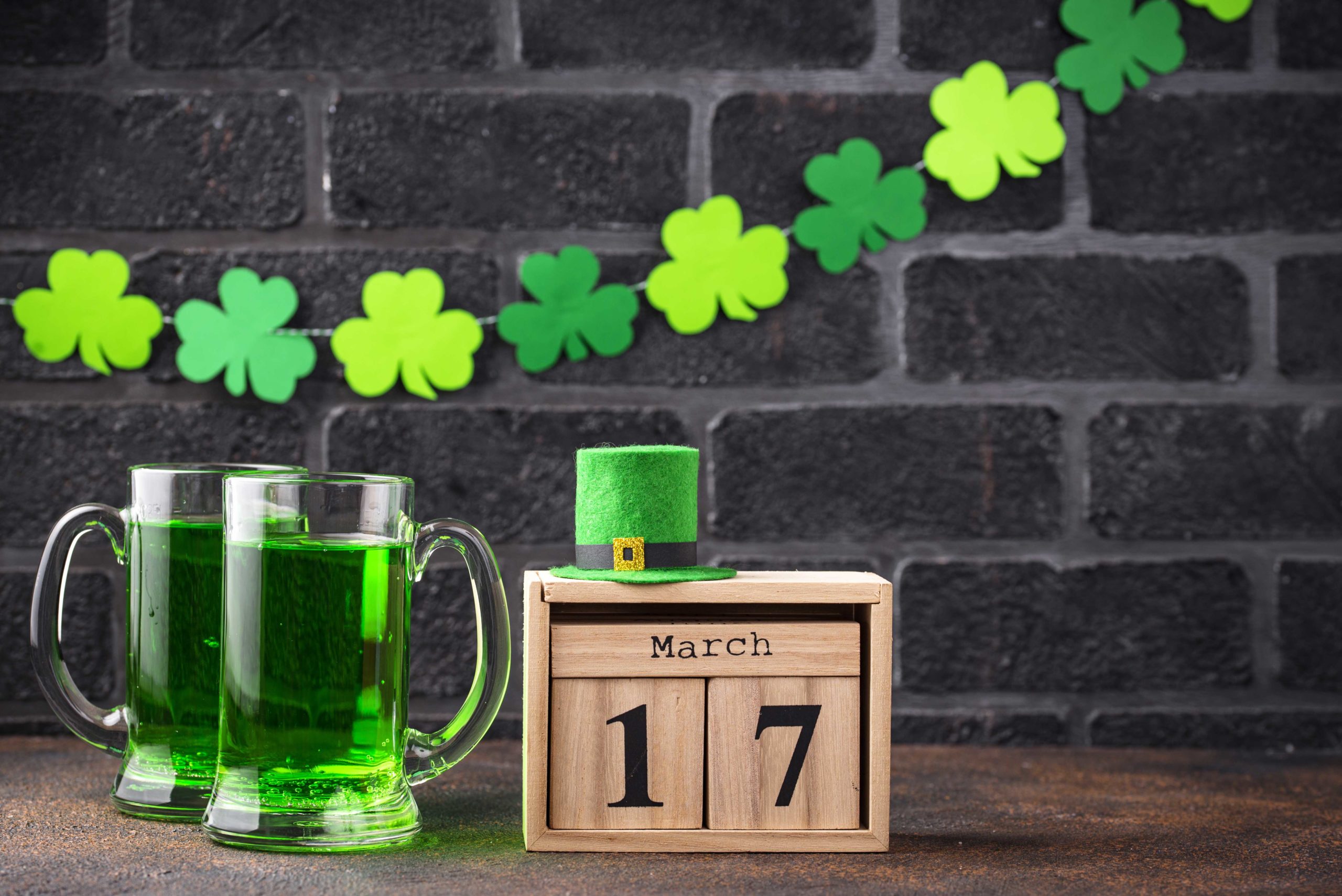
Saint Patrick’s Day and Lent
The festival is always held during Lent. Therefore, it is traditional for some Christians observing a Lenten fast to break it on Saint Patrick’s Day.
The Church calendar avoids observing saints’ days during certain solemnities, thus moving the saint’s day out of the observance period. Saint Patrick’s Day is periodically affected by this change, mainly when 17 March falls during Holy Week.
This had already happened in 1940 when Saint Patrick’s Day was observed on 3 April to avoid coinciding with Palm Sunday, and again in 2008 when it was observed on 14 March.

A bit of vocabulary
There are several terms for the Irish festival:
- Saint Patrick’s Day (or St. Patrick’s Day)
- Saint Paddy’s Day (or St. Paddy’s Day)
- Feast of Saint Patrick (or Feast of St. Patrick)
- Patty’s Day (especially in Northern America)
- Lá Fhéile Pádraig (in Gaelic)
- La Saint-Patrick (in French)
- La fête de la Saint-Patrick (in French)
- The French equivalent to Patrick is Patrice.
Saint Patrick’s Day in France
Celebrated since the 1990s in France, Saint Patrick’s Day arrived in the wake of Halloween, another Irish festival revisited by the Americans, imported with success and through commercial operations.
![Saint Patrick's Day in France © Patrice CALATAYU - licence [CC BY-SA 2.0] from Wikimedia Commons](https://frenchmoments.eu/wp-content/uploads/2023/01/Gilets-Jaunes-in-Green-©-Patrice-CALATAYU-licence-CC-BY-SA-2.0-from-Wikimedia-Commons.jpg)
On the 17th of March, Irish expatriates celebrate Saint Patrick’s Day in France. However, its popularity is spreading to Ireland-loving French people who participate in the festivities and claim to be “Irish for a day”.
Celebrating Saint Patrick’s Day in France
The celebrations usually involve the colour green and all things Irish.
Initially, the colour of Saint Patrick was blue. Green was introduced in 1798 during the Irish Rebellion when the shamrock became a symbol of nationalism.
Whether Christian or not, participants in the festival wear at least one item of clothing with green. Across the country, there are concerts of Celtic music, Irish dance performances, and street parades.
![Saint Patrick's Day parade in Belfort (2019) © Thomas Bresson - licence [CC BY 4.0] from Wikimedia Commons](https://frenchmoments.eu/wp-content/uploads/2023/01/Saint-Patricks-Day-in-Belfort-2019-02-©-Thomas-Bresson-licence-CC-BY-4.0-from-Wikimedia-Commons-scaled.jpg)
![Saint Patrick's Day parade in Belfort (2019) © Thomas Bresson - licence [CC BY 4.0] from Wikimedia Commons](https://frenchmoments.eu/wp-content/uploads/2023/01/Saint-Patricks-Day-in-Belfort-2019-01-©-Thomas-Bresson-licence-CC-BY-4.0-from-Wikimedia-Commons-scaled.jpg)
But above all, they consume Irish food and drink, especially alcoholic beverages (Irish beers and stouts, such as Murphy’s, Smithwick’s, Harp or Guinness, whiskeys), Irish ciders, and Irish coffees.

Where to celebrate St Patrick’s Day in France?
Many events are organised throughout France on Saint Patrick’s Day. Here are a few examples.
Centre Culturel Irlandais in Paris
To learn more about the traditional Irish festival, you must go to the Irish cultural centre in the 5th arrondissement of Paris (located on the Rue des Irlandais!). On the programme: Celtic concert and exhibitions.
The Moulin Rouge goes green
Funny as it may seem, the Moulin Rouge goes green for Saint Patrick’s Day. The famous Parisian cabaret swaps its red facade for a sparkling green and puts on a show made in Ireland.
The Eiffel Tower lights up in green
The Moulin Rouge is not the only monument to light up in green. The Eiffel Tower – and other Parisian monuments – are lit in green after dark. A magnificent sight to see at least once in your life!
Cannes goes Irish
The capital of French cinema is dressing up its most beautiful monuments in green: the town hall, the Palais des Festivals and the bridge on Rue Barthélémy! A tribute to Saint Patrick, who, according to legend, settled in the monastery of Saint-Honorat (on the island of Lérins) to study theology.
Brittany in the colours of Ireland
Saint Patrick’s Day is a festival that is strongly represented throughout Brittany. The twinning committees play an essential role in the expansion of this event. For example, in Lorient, it is an opportunity to celebrate its twinning with the city of Galway since 1974. Various festive events are organised for this occasion by the City in the centre of Lorient.
However, Saint Patrick’s Day in France does not have the same popularity as in the United States.
Saint Patrick’s Day in America
Following the Great Famine, many Irish emigrated to New York and New England in the mid-19th century.
These devout Catholics kept the habit of celebrating Saint Patrick’s Day on March 17.
However, America’s Saint Patrick’s Day celebrations existed long before this famous emigration episode. The first celebration of the festival took place in Boston in 1737, and the first official parade in New York in 1762, i.e. in the days of the British colonies, before American independence.

Today, New York City hosts the world’s largest Saint Patrick’s Day parade, with more than two million spectators on Fifth Avenue in front of the towers of St. Patrick’s Cathedral, a church built in the 19th century in the flamboyant style.
![Saint Patrick's Day Parade in New York City © James Felder - licence [CC BY 2.0] from Wikimedia Commons](https://frenchmoments.eu/wp-content/uploads/2023/01/Saint-Patricks-Day-Parade-New-York-©-James-Felder-licence-CC-BY-2.0-from-Wikimedia-Commons.jpg)
![Saint Patrick's Day Parade New York 02 © James Felder - licence [CC BY 2.0] from Wikimedia Commons](https://frenchmoments.eu/wp-content/uploads/2023/01/Saint-Patricks-Day-Parade-New-York-02-©-James-Felder-licence-CC-BY-2.0-from-Wikimedia-Commons.jpg)
Even today, American families of Irish descent send each other greeting cards with green designs reminiscent of the Irish shamrock. This shamrock, which Patrick used to explain the mystery of the Holy Trinity, has become the island’s emblem.

Find out more!
- Find out more about Spring in France.
- Read this article in French on our blog Mon Grand-Est 🇫🇷
- Read more on Wikipedia.
![Saint Patrick's Day parade in Montreal © Sandra Cohen-Rose and Colin Rose - licence [CC BY 2.0] from Wikimedia Commons](https://frenchmoments.eu/wp-content/uploads/2023/01/Saint-Patricks-Day-in-Montreal-©-Sandra-Cohen-Rose-and-Colin-Rose-licence-CC-BY-2.0-from-Wikimedia-Commons-scaled.jpg)
Pin it for later
Did you enjoy the reading? If so, please share this article on Facebook and Twitter, or pin the image below on Pinterest:
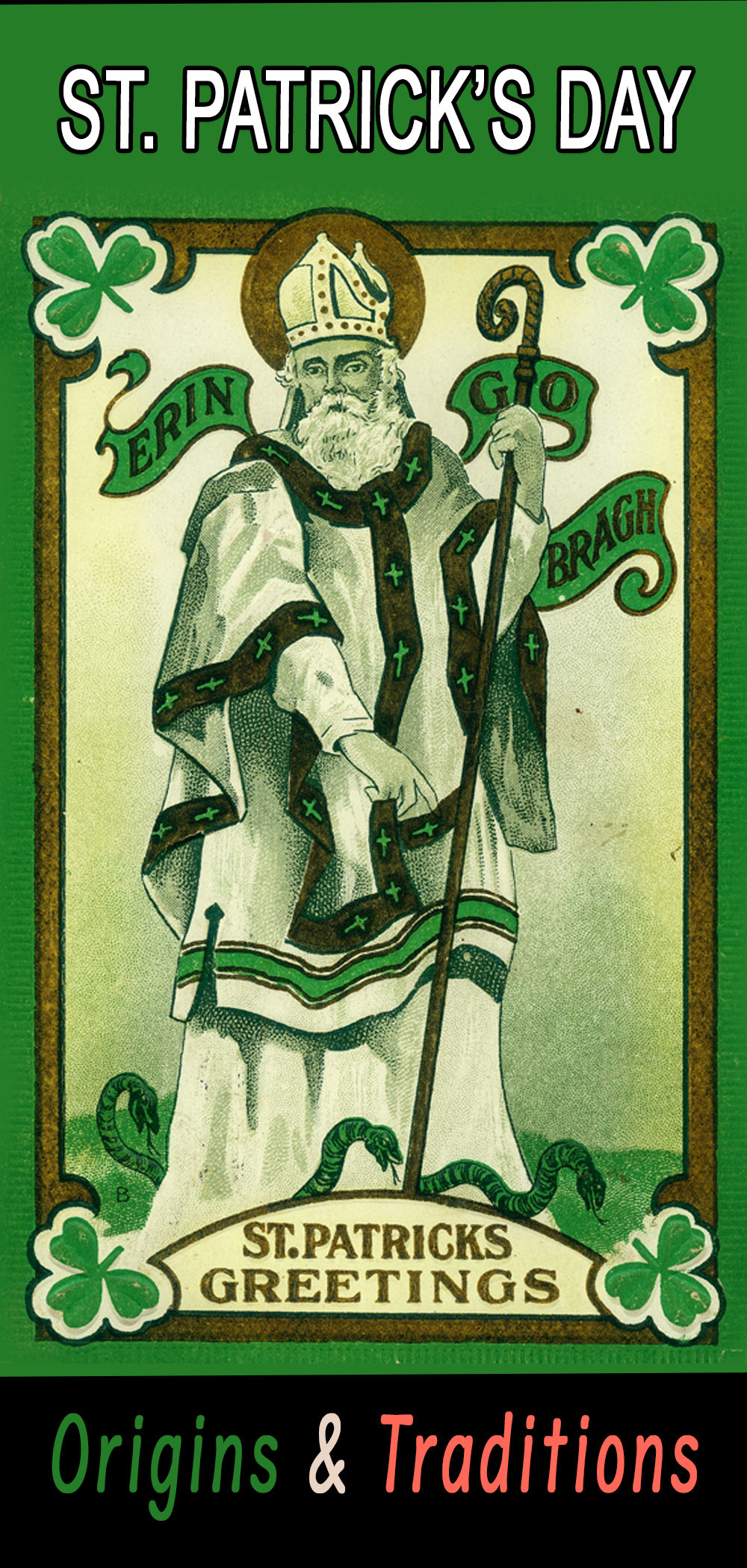
Featured image: Saint Patrick’s Day. Photo by grafvision via Envato Elements



